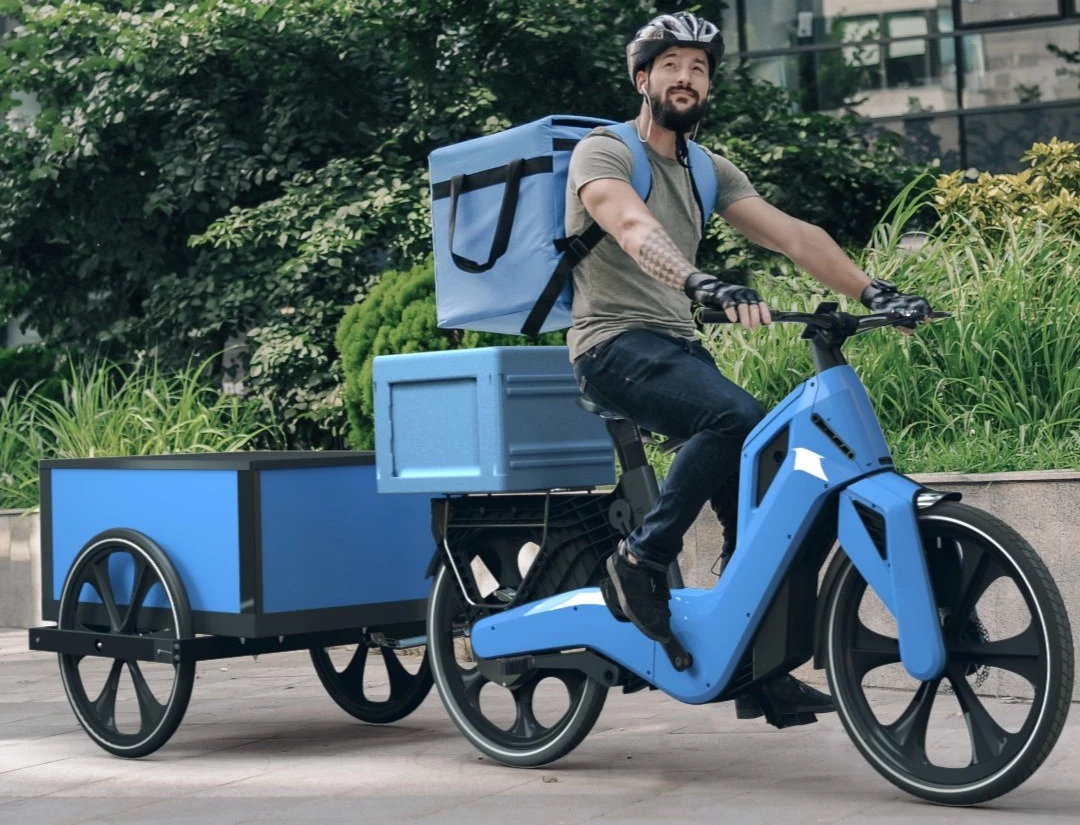Two years ago we first heard about Schaeffler's Free Drive system, which uses a generator instead of a chain or belt to propel an ebike. The technology is now entering its first commercial use, in fleets of ebikes made for commuting and cargo-hauling.
Developed in partnership with two-wheel electric drive specialist Heinzmann, the Free Drive system incorporates a bottom-bracket-integrated generator, a rear hub motor, a lithium battery pack, and a handlebar-mounted control module.
As the rider pedals, they spin up the generator. Doing so converts their mechanical energy into electrical energy, which is fed into the motor. That motor converts the electrical energy back into mechanical energy, which is used to turn the wheel.
The generator regulates the amount of resistance that the rider experiences while pedaling, based on the level of pedaling effort they have selected in order to maintain cruising speed. Should they pedal harder than is necessary, the excess energy is stored in the battery. A regenerative braking system helps keep the battery topped up.
Although Schaeffler admits that Free Drive is about 5% less efficient than a chain drive at converting pedaling power into forward motion, the system also allows for much greater freedom when it comes to the design of pedal-powered vehicles – after all, the crankset only needs to be connected to the rear wheel via electrical wiring.
Additionally, Free Drive reportedly requires much less maintenance than a chain drive.
Schaeffler has now announced that the system will be making its first commercial appearance in the mocci Smart Pedal Vehicle made by fellow German company CIP Mobility. The latter firm will be selling fleets of the mocci ebikes to corporate clients, who will in turn use them in bike-sharing projects, urban deliveries or other applications.
Along with its Free Drive drivetrain, some of the mocci's other features include sturdy one-piece monocoque wheels; a recyclable polyamide frame made using a unique injection molding process; a built-in telemetry system; plus multiple rack-mounting points and an optional cargo trailer.
Sources: Schaeffler, CIP Group via Electrek







